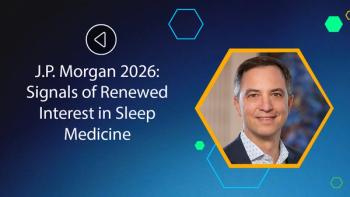
UK: Patient Group Sets Out Orphan Drug Charter
There has been a lot of concern about the decision to give the National Institute for Health and Care Excellence (NICE) the responsibility to look at “highly specialized technologies” (HSTs, or orphan drugs to you and me).
There has been a lot of concern about the decision to give the National Institute for Health and Care Excellence (NICE) the responsibility to look at “highly specialized technologies” (HSTs, or orphan drugs to you and me). That decision was taken just as the NHS across England was going through major reform and meant the end of a still young committee, the Advisory Committee for National Specialized Services (AGNSS).
Part of the concern related to how open NICE might be to adapting their approach and long-standing issues with how well the cost per Quality Adjusted Life Year (QALY) model worked for orphan drugs. And now a new Patient Charter has been launched to act as a sense check on how NICE applies their interim guidance on appraising HSTs.
Highly Specialized Technologies Patient Charter
The
The HST Patient Charter has 29 recommendations, so NICE has quite a to do list if they are minded to take them up. But don’t let the fact that it has so many recommendations put you off, it’s worth a read even if just to marvel at how so many patient organisations represented under the umbrella of the Genetic Alliance have come together on such a tricky issue of appraising orphan drugs.
Patient involvement is key, but patients also need greater clarity about how NICE’s HST fits into the NHS. As you’d expect, patient involvement runs throughout. And that can be hard when a disease affects so few in England that a patient group doesn’t even exist. The solution they suggest is that NICE, the Department of Health and the Genetic Alliance should help form one. The process should even have ‘clock stops’ to allow patient involvement throughout.
Similarly the theme of “clarification” runs throughout. The Charter asks that how decisions are made to apply the NICE HST process be made clear, how it fits into wider commissioning, and just what ‘clinically distinct’ means in today’s modern world of medicine.
Other patient charters
The Highly Specialized Technologies Patient Charter joins a long list of other ‘Charters’ that have been tried in England. These include the
The HST Charter references the NHS Constitution, making it clear that when/if NICE HST says ‘yes’ then the NHS in England will have to fund the orphan drug. But it also asks what happens when a product isn’t subject to a NICE HST: this is where some drugs fall between NICE and can then be subject to the local vagueries of funding.
First HST test case for NICE, more questions than answers so far
Alexion’s ecluzimab is the first product to go through the NICE HST process. The process is still considered ‘interim’ so there is hope that it could flex, and hopefully taking into account the recommendations from the HST Patient Charter.
But so far it seems to be raising more questions than answers.
Not only has NICE asked for more information from Alexion on cost, they have also asked NHS England (responsible for funding specialised services – basically the services for those with very rare conditions) “for advice..on what considerations relating to the management of its specialised commissioning budget it considers should be taken into account in formulating a recommendation”.
Roughly translated, how much of your budget do you want to put into this one orphan drug? A pertinent question when the cost could be £57 million in the first year, or up to £82 million by year five.
NICE was due to meet again to discuss ecluzimab: on the 22nd April but that meeting was proposed so that the Appraisal Committee could consider new information. A final decision isn’t expected until July. Sometime this year there should also be a consultation on NICE’s approach to HSTs. The HST Patient Charter could prove a useful tool to assess just how well NICE is doing, and whether patients approve of how they are going about a tough job.
Leela Barham (leels@btinternet.com) is an independent health economist who blogs at
Newsletter
Lead with insight with the Pharmaceutical Executive newsletter, featuring strategic analysis, leadership trends, and market intelligence for biopharma decision-makers.




